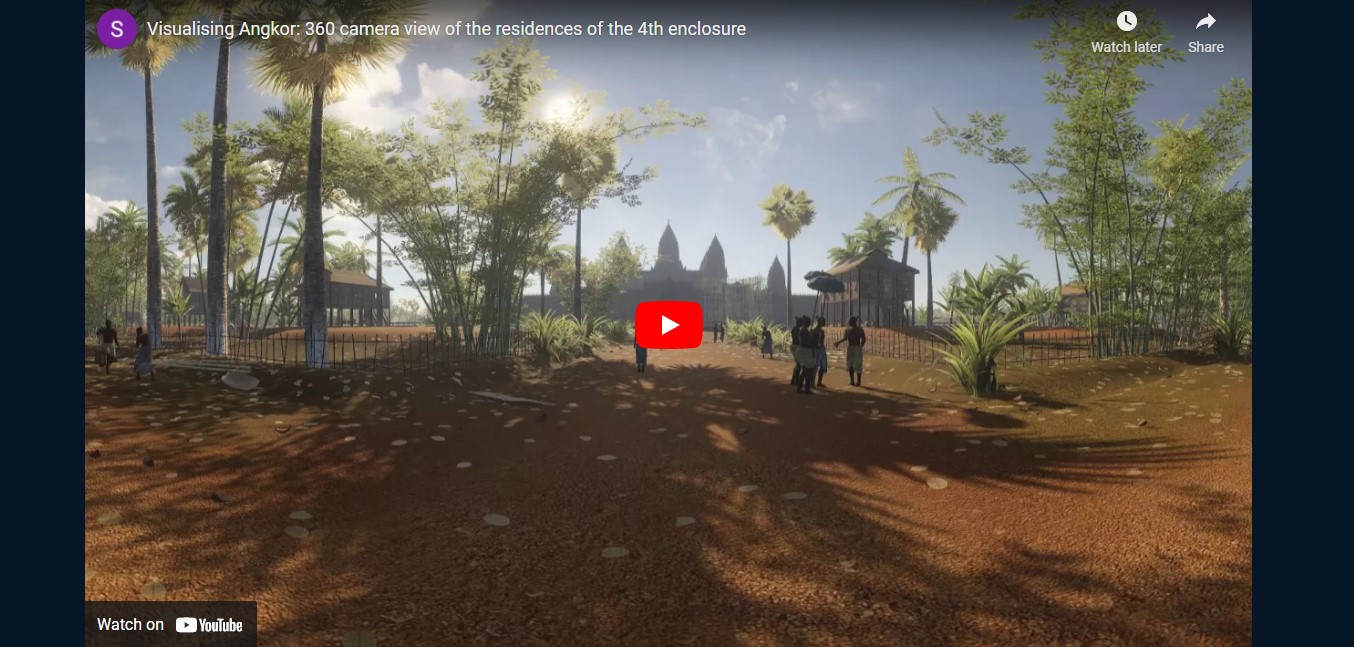
Flinders University archaeologist Dr Martin Polkinghorne is part of a team that received an award from the Medieval Academy of America for the spectacular digital recreation project Virtual Angkor.
In bestowing the 2021 award for Digital Humanities in Medieval Studies, the award committee described the Virtual Angkor project on the Medieval Academy of America website as representing the very best of digital medieval studies.
The project recreates the sprawling Cambodian metropolis using archaeological and textual sources to visualize a 24-hour cycle from the 13th century. This immersive simulation of Angkor Wat embraces the notion of the global middle ages in a very concrete way, supporting the Academy’s mission to broaden our understanding medieval life – especially because Angkor Wat in Cambodia, a site of profound cultural significance, religious complexity and architectural grandeur, was long regarded as outside the purview of medieval studies.
The panoramic 3D video program is accessible from any computer, while a virtual reality option is also available using commercially available VR headsets.
The judges applauded Virtual Angkor presenting Angkor Wat as part of a larger, interconnected world, enabling investigation of this medieval complex through its holistic analysis of trade, diplomacy, climate, political power and the sense of place. “Invaluable as a teaching tool, Virtual Angkor is also a source upon which traditional humanities research can be constructed through its use of primary sources, archaeological findings and architectural analysis,” said the award judges.
Dr Polkinghorne is also co-author of a new paper that continues detailed archaeological examination of the Ankor site – “Diachronic modelling of the population within the medieval Greater Angkor Region settlement complex,” by S. Klassen, A. K. Carter, D. H. Evans, S. Ortman, M. T. Stark, A. A. Loyless, M. Polkinghorne, P. Heng, M. Hill, P. Wijker, J. Niles-Weed, G. P. Marriner, C. Pottier and R. J. Fletcher, which has been published in Science Advances journal (DOI: 10.1126/sciadv.abf8441).
The paper outlines further work on recording a comprehensive demographic study of Angkor, one of the world’s largest premodern settlement complexes (9th to 15th centuries CE), to reveal key aspects of its population and demographic history.
The research team has combined lidar, archaeological excavation data, radiocarbon dates, and machine learning algorithms to create maps that model the development of the city and its population growth through time.
They conclude that the Greater Angkor Region was home to approximately 700,000 to 900,000 inhabitants at its
apogee in the 13th century CE. This granular, diachronic, paleodemographic model of the Angkor complex can be
applied to any ancient civilization.

